Crash Tested (With Video!): Forcite MK1 Smart Helmet Review

A vlogging helmet put to the ultimate test.
Reviewing a crash-tested piece of gear is up there on our least favorite things to do on this job, and when said piece of gear is a helmet, we’re especially annoyed – and that’s putting it mildly. However, the fact I’m here and able to write a review about a crashed helmet at all is a good sign, especially when the helmet comes from an up-and-coming company in the smart helmet space.
Yes, you read that right. I crashed a smart helmet. A Forcite MK1, to be exact. You may not have heard of Forcite helmets before unless of course you’ve seen our Mega Helmet Shootout, which briefly featured the MK1. Based in Australia, Forcite’s big selling point is its integrated camera, speakers, and microphone that pair harmoniously with the proprietary Forcite app. This allows for turn-by-turn navigation without the need for a separate communicator. The app and map are optimized for Forcite’s home country of Australia, but we’re told it still works in the US, including in my Los Angeles locale. Similar to the Waze app, not only does it audibly give turn-by-turn directions, but it also will glow thin, colored LEDs at the top rim of the chin bar to also tell you which way to turn by way of your periphery. In addition, it’ll also alert you to cops or speed cameras up ahead.
Forcite MK1 Smart Helmet
| Aesthetics | 8/10 | Protection | 9/10 | Comfort | 8/10 |
| Value | 8/10 | Weight | 9/10 | Innovation | 9/10 |
| Quality | 8/10 | Options | 9/10 | Weather | 10/10 |
| Desirability | 9/10 | Editor Score: 87% | |||
+ Highs
- Really innovative, without being gimmicky
- The integrated camera/microphone/speaker produce nice (but not groundbreaking) results
- It meets ECE 22.05 standards!
– Sighs
- Couldn’t view, edit, or share videos from app (that has since been resolved with MK1S)
- Sun visor frustratingly rarely slides down (supposedly fixed with MK1S)
- Currently doesn’t support voice commands
While handy and convenient, my main draw to the Forcite MK1 was the built-in camera in the chin bar. In case you weren’t aware, making review videos on Youtube has become as big a job around here as these written words you’re reading, and the built-in camera and microphone makes this process infinitely easier.
I’ve played around with so many devices to try and capture good riding videos from the rider’s POV, and while some worked better than others, the integration of the camera in the Forcite MK1 made this my go-to for onboard video. Having the ability to narrate at the same time was icing on the cake. Before I crashed it, of course. You may not have realized it, but the onboard riding footage from this Ducati Streetfighter test and my time riding the Harley-Davidson Bagger race bike were taken with the Forcite. If a pure riding video is what you want to see, then check this out.
I get it. For many of you, the terms “start-up” and “helmet company” are enough to dismiss Forcite entirely. Adding in an integrated camera, speakers, microphone, and a phone app could be considered nails on the coffin. However, the MK1 is both DOT and ECE 22.05 approved. Meaning it meets European safety standards while being innovative at the same time (and while I have my opinions, this is not the space for the SNELL vs. ECE vs. DOT debate).
What’s Inside
Before getting to my crash and the aftermath, let’s first discuss how the MK1 is constructed. To get it out of the way right off the bat, it’s made in Vietnam. And guess what – so are many other helmets. That’s just the way the global economy works. However, final assembly, inspection, firmware flash, and QC check is done in its Alexandria, Australia facilities. Now, with that out in the air, in many ways the MK1 is just like many other helmets. The outer shell is completely carbon fiber to help keep weight down, and it comes in either a gloss finish or the matte version seen in these photos. Inside, the sweat-wicking liner features 3D-formed cheek pads and crown for a more contoured fit. The neck roll design is thick to create a firmer seal around the neck to block out the wind. In combination with the extended chin curtain, wind noise coming up and into the helmet is reduced. This is not only a benefit for those trying to hear anything coming out of the speakers, but also for those who value clearer sound when talking into the microphone (which was the case for me).
Ventilation is rather standard, with eight vents in the typical areas: two above the head, two above the visor, and four on the chinbar, including two that flank the integrated camera. In my experience, the vents are most effective if your head is already wet from sweat and/or you’re riding in cool/cold air. Airflow is decent, but it’s not going to be giving the folks at Arai (one of the best when it comes to airflow, IMO) anything to worry about.
Other standard features include the quick-release faceshield that’s also PinLock ready. Like other helmets, you can get dark shields and even iridescent shields. The twist to this equation is, at least with the MK1, taking the shield off doesn’t involve pushing buttons or releasing levers. To take off the MK1 shield, you align tabs on the visor with slots on the helmet’s sidepod before lifting it off. It’s easy enough on clear shields to see the tabs, but virtually impossible on dark or iridescent shields. You learn to figure it out by feeling and eyeballing where the tab should be. The good news is the updated MK1S has a different shield change mechanism with spring-loaded release levers, like many other helmets.
Another, more annoying, gripe goes to the internal sun shield. Operated by a sliding lever adjacent to the left face shield pod, often I couldn’t get it to work because either it or the sun visor itself would get stuck on its railing and not come down. Opening the main visor and using my ungloved hands to physically pull the sun shield down solved that problem. Then I’d have to remember not to completely retract the sun shield when I was done to have it work the next time. As you can imagine, I never remembered.
Right about now, it’s important to note that since my tumble, Forcite has released an updated version of the MK1, called the MK1S. The overall shape and construction is the same, except the interior liner is updated and nicer, the sun shield issue has been fixed (so I’m told), the shield changing mechanism is changed, and the electronics and app have been updated with new software.
As far as fit goes, my 57cm intermediate-oval head fits into the Medium MK1 with a tiny hot spot on my forehead. I swapped the standard cheek pads for thicker 30mm ones and then the fit became super snug (but not painful) – just how I like my track helmets to fit.
The MK1’s Main Selling Point
The camera. It’s mounted – or rather, integrated – directly into the chin bar (play the graphic below to see an exploded view). According to the famous Hurt Report, up to 35% of initial impacts in motorcycle accidents happen right on the chin. So, it’s important not to skimp on safety here. Then again, the chin has also become a hugely popular spot to mount action cameras for onboard footage.
Forcite’s solution kills two birds with one stone. The camera, and all of the electronics required to operate it, are mounted within a patented module that fits inside the chin bar without compromising the integrity of the EPS liner. The secret weapon in this module is what Forcite calls the reflex mechanism. It’s essentially a pliable plastic layer between the module (itself a robust sandwich of circuit boards) and the EPS layer that allows the module to sit independent of the shell. In fact, Forcite says, in an impact, this reflex mechanism allows the shell to flex instead of crack. It’s a major reason why the MK1, and now MK1S, is able to meet ECE 22.05 standards.
As for the camera itself, it records in 1080P with 30-60 FPS frame rate on a ¼-inch Sony IMX sensor. The wide-angle lens captures the rider’s POV except at the extremes of the periphery, and impressively, the camera can record for up to four hours before the battery runs out or the memory card fills up. It supports memory cards up to 1TB, too, so there’s plenty of space. Surprisingly, the microphone is omnidirectional but is tuned to prioritize voices and reduce wind noise. Removable speakers fit nicely within dedicated pockets, making them practically impossible to notice when you’re wearing them – another problem I’ve had with a lot of aftermarket comm systems. And of course, being a smart helmet the MK1 supports Bluetooth 5.0.
When all is said and done, I was shocked to learn the medium Forcite MK1 I’d been wearing weighed in at 3 lbs 7.6 oz (1576.2 g). That’s lighter than a few well-known helmets out there without cameras, speakers, and microphones! However, it’s worth noting that the MK1’s weight distribution is, unsurprisingly, heavily biased towards the front. Wearing it, however, you’d be hard-pressed to actually feel it. I’d started to get used to the MK1’s fit, and especially came around to it after fitting the thicker cheekpads. The hot spot on my forehead wasn’t a big deal for quick bursts on track, but my deliberate adjustments to make it tight meant it was never supposed to be my street helmet.
The Crash and the Aftermath
Now the part you’ve been waiting for. After using the helmet for various videos for bike reviews, I decided to use the helmet for my own personal racing endeavors, too. For better or for worse, you have become the benefactor. Here’s why:
Obviously not the way I wanted things to go, but a good excuse to write a gear review about a crashed helmet. The data shows that the bike and I split ways at 90-something miles per hour. The footage may not clearly show what happened, but this was a case of red mist, cool tires, and an experimental bike setup that clearly didn’t work in my favor.
After telling myself to keep it cool and use the race as a practice session to get more feedback on the bike setup, all that flew out the window after slotting into second place at the start. With the leader in sight, I decided to give chase. I’ve gone through that left-hander so many times before, but this time, the massive torque available at the twist of my right hand spun the tire sideways instead of driving me forward.
As you can see, I tumbled quite a bit. The first impact the helmet took was to the back of the head before tumbling every which way. After all was said and done, my shoulders and neck were sore from tensing up, I had a nice bruise on my thigh, but other than a small headache my head was alright. I never lost consciousness, I knew exactly where I was, the day’s date, and the event I was attending (the crash truck driver asked). In fact, the camera was still recording! I know no two accidents are ever alike, but considering what happened here, and how I felt after, I’m more than pleased with the Forcite MK1.
My Main Gripe
Other than the wonky sun shield mechanism, my other main gripe with the MK1 was the inability to view, edit, or share the video files from the app. I had to remove the memory card and stick it in my computer to see the footage. However, there’s no need to gripe about that now, because part of the updated software and app functions for the MK1S includes the ability to do all of these things from the app. Forcite also has a physical data cable that connects from the USB-C port on the helmet to the port on your phone to also serve the same purpose.
As for video quality itself, it’s worth noting that the video isn’t going up to the levels of, say, GoPro or Insta360. Those players have moved on to 4K (and even 5K) technology. However, 1080p is just fine for making riding videos for the Motorcycle.com Youtube channel. Plus, this gives Forcite something to strive for with future iterations of the helmet.
Consider Me Satisfied
In case you didn’t notice, I’m a fan of what Forcite is doing. The helmet, first and foremost, saved my melon. But it’s also fairly lightweight, comfortable enough for my track purposes, and captures high-quality video and audio. If I’m lucky enough to get a hold of the MK1S, I’ll do a more thorough evaluation of its GPS navigation capabilities on the street.
As of this post, Forcite hasn’t launched yet in the US. It was supposed to, but like all things involving the supply chain lately, its production facilities have been extremely delayed. This obviously poses a problem on this side of the Pacific, but even at home Forcite has been extremely busy – the first batch of MK1S models were sold out within hours of its announcement. Currently, Forcite says it has over 1,300 existing customers, with more to come as production is able to meet demand. Pricing is hard to nail down since the helmet isn’t available here yet, but for a ballpark figure, in Australia it starts at $1,299 AUS.
The sticker shock might be a lot to swallow, but if you stop to consider what it would take to purchase a helmet, camera, and comm system separately to do all the things the MK1 (and now MK1S) can do, you’d easily blow past that amount.
Thanks for saving my dome, Forcite.
Forcite MK1 FAQ
Where are Forcite helmets made?
Forcite helmets are made in Vietnam, but final assembly and quality control checks are done in Forcite’s HQ in Australia.
Where does Forcite get its funding?
To date, Forcite has raised over $10 million, from its four investors.
How does the Forcite MK1 (and now MK1S) helmet fit?
The MK1 and MK1S helmets tend to fit intermediate-oval head shapes, but in our opinion, the shell could be slightly elongated for a true intermediate-oval shape.
Additional Resources
We are committed to finding, researching, and recommending the best products. We earn commissions from purchases you make using the retail links in our product reviews. Learn more about how this works.
Become a Motorcycle.com insider. Get the latest motorcycle news first by subscribing to our newsletter here.

Troy's been riding motorcycles and writing about them since 2006, getting his start at Rider Magazine. From there, he moved to Sport Rider Magazine before finally landing at Motorcycle.com in 2011. A lifelong gearhead who didn't fully immerse himself in motorcycles until his teenage years, Troy's interests have always been in technology, performance, and going fast. Naturally, racing was the perfect avenue to combine all three. Troy has been racing nearly as long as he's been riding and has competed at the AMA national level. He's also won multiple club races throughout the country, culminating in a Utah Sport Bike Association championship in 2011. He has been invited as a guest instructor for the Yamaha Champions Riding School, and when he's not out riding, he's either wrenching on bikes or watching MotoGP.
More by Troy Siahaan




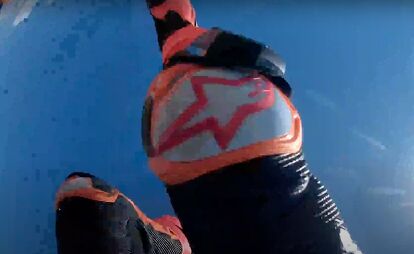
























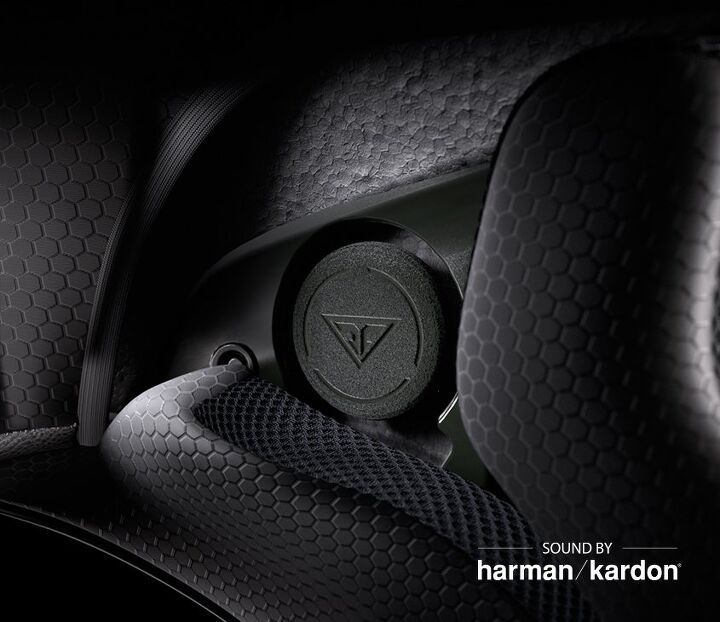













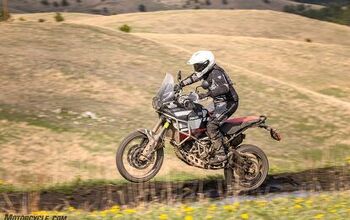
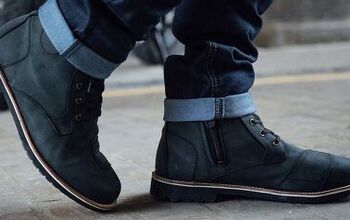
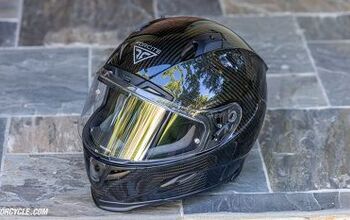
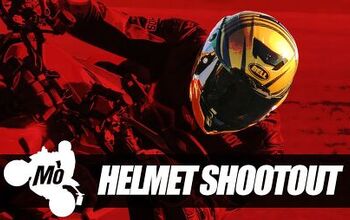













Comments
Join the conversation
Trizzle, you are in the finest company. Good onya! (And very glad you are okay.)
https://youtu.be/TSXKplZDzR...
Great start. But wait, is that the same helmet you wore when bumped off at Laguna?
I have a Mk1S. No trouble with the sunshield or visor, but controls are intermittent, and video freezes when playing from cable to computer. Field of view is excellent and resolution acceptable, but not what used to be called "broadcast quality." More than anything, the unit needs a better image stabilization system. I don't expect to test the crash-worthiness. Of course, who does?